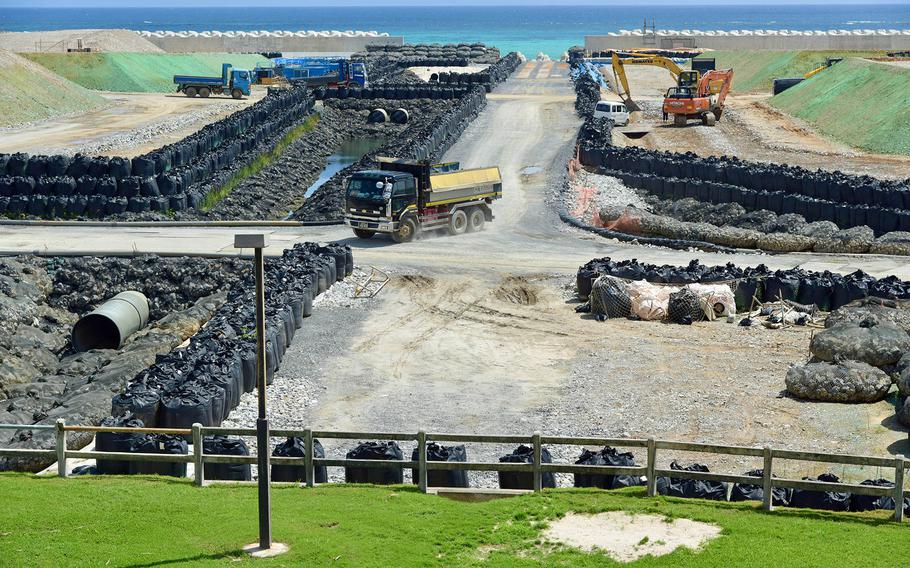Marine Corps
Marine runway construction on Okinawa may finish by 2032, Japan’s defense minister says
Stars and Stripes April 24, 2023

Construction work continues on a Marine Corps runway at Camp Schwab, Okinawa, Sept. 15, 2022. (Frank Andrews/Stars and Stripes)
CAMP FOSTER, Okinawa — Construction of a runway designated the future home of Marine Corps air operations on Okinawa is only 14% complete and will take until 2032, at least, to complete, the Japanese defense minister said recently.
The runway at Camp Schwab on Okinawa’s rural northern coast was originally scheduled to be finished by 2014, but a steady stream of lawsuits from successive Okinawa governors has slowed progress.
“The construction is steadily moving forward,” Defense Minister Yasukazu Hamada told Japan’s National Security Committee on April 18, according to a video of his address. “We will keep working hard to realize the reversion of Futenma as soon as possible.”
Hamada’s estimate adds another two years to the most recent calculation by the Okinawa Defense Bureau, which said three years ago the airfield could be finished by 2030.
The airfield at Schwab is meant to replace Marine Corps Air Station Futenma in urban Ginowan. That base, surrounded by city neighborhoods, is considered dangerous by Japanese officials.
The construction zone on the base and in Oura Bay is divided into two main sections, 279 acres on the north side of Schwab, and 91 acres to the south, according to the Okinawa prefecture website. Development on the smaller parcel is 92% complete, Hamada said.
Work on the larger parcel has been on hold since April 21, 2020, when the Okinawa Defense Bureau, which represents the Defense Ministry on the island, asked Okinawa Gov. Denny Tamaki to approve changes to the construction plans. Tamaki declined, which spurred Tokyo to intervene.
The prefecture then filed three lawsuits, two of which have already been dismissed. Arguments for the third are scheduled for Wednesday.
Okinawa prefecture lost seven lawsuits and withdrew four since the project was approved in 2013.
Hamada reiterated Prime Minister Fumio Kishida’s commitment to the site, saying “Henoko is the only solution” and the fastest way to close MCAS Futenma. Construction should conclude in nine years and three months once the lawsuits are adjudicated and permitting approved, he said.
“We think that this period is reasonable and achievable,” he said.
The runway project dates to 1995 when two Marines and a Navy corpsman kidnapped and raped a 12-year-old girl. During the mass protests that followed, Ginowan residents called for closing MCAS Futenma.
Schwab was chosen in 1997 and a plan was unveiled in 2006. Gov. Hirokazu Nakaima approved the project in 2013 and soon lost reelection. Since then, costs have ballooned.
Critics say the seabed in Oura Bay is too soft to hold a runway and that construction threatens the endangered dugong, a cousin of the manatee protected by Japanese law.
The runway is estimated to cost around $6.9 billion, to be paid for by the government of Japan.